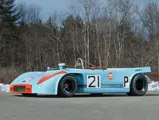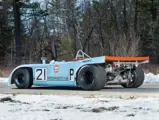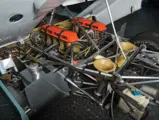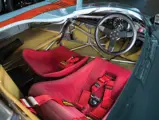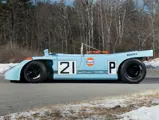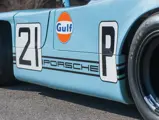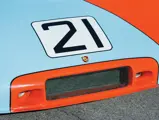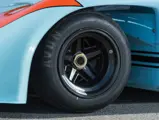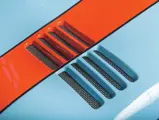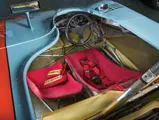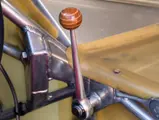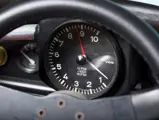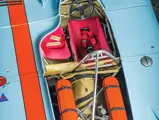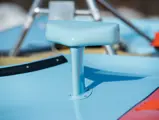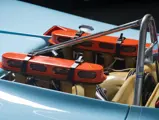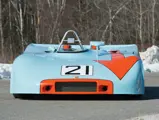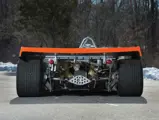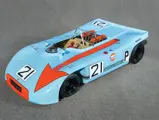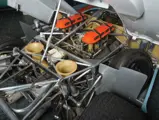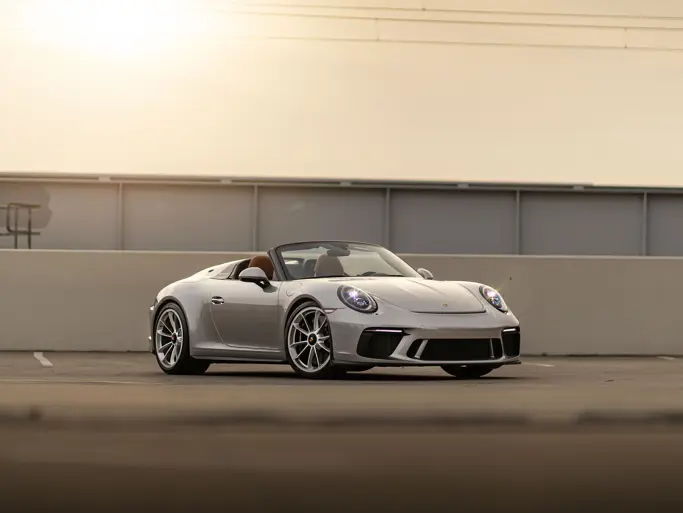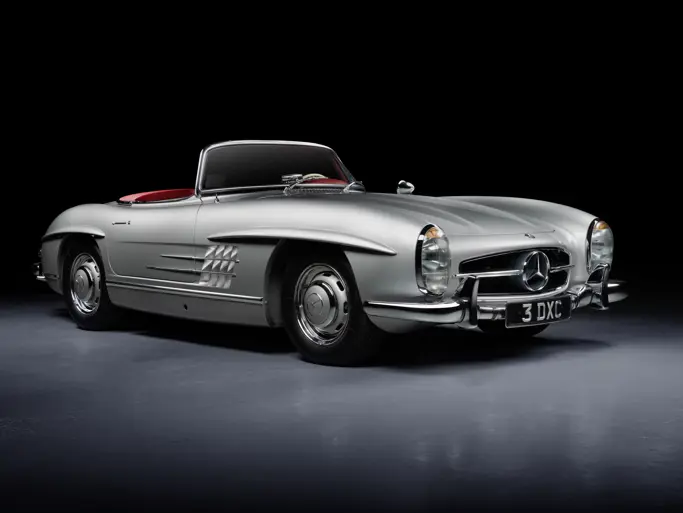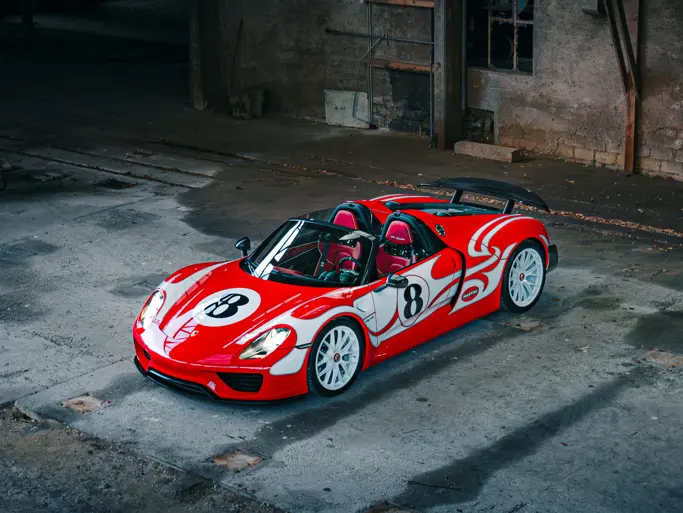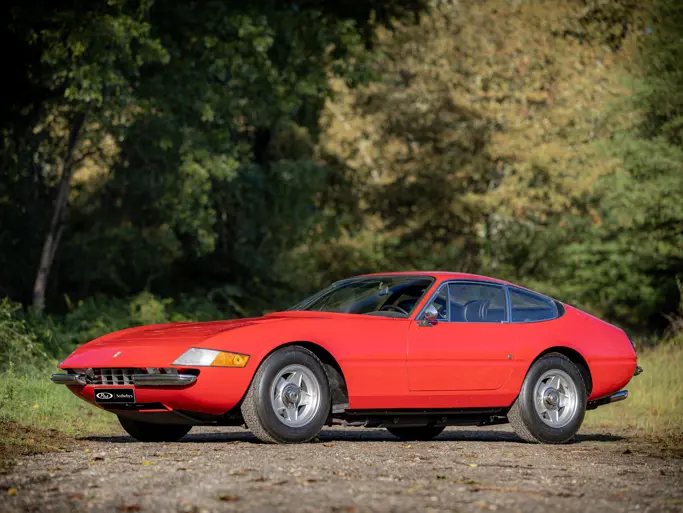Amelia Island 2013
1970 Porsche 908/3
{{lr.item.text}}
$1,400,000 - $1,700,000 USD | Not Sold
 | Amelia Island, Florida
| Amelia Island, Florida
{{internetCurrentBid}}
{{internetTimeLeft}}

- Number four of 13 examples produced
- Just four private owners over 37 years
- Factory test-chassis of the Targa Florio-winning model that contributed to Porsche’s 1970 and 1971 Makes Championship
- Two-and-a-half-year restoration completed in 2005
- Recognized as authentic by the Porsche factory
- Exhibited with, and vintage raced against, some of Porsche’s greatest drivers
- Lightweight aluminum chassis with precise handling and powerful performance
- Ideal for vintage racing events and concours d’elegance
350 bhp, 2,997 cc DOHC air-cooled flat eight-cylinder engine with Bosch mechanical fuel injection, five-speed manual transaxle, four-wheel independent suspension with coil springs and shock absorbers, and four-wheel disc brakes. Wheelbase: 91.5 in.
The 1970 season proved to be a milestone for Porsche racing in a number of respects. After winning the International Championship for Makes in 1969 with the 908/2, and concurrently introducing the soon-to-be-dominant 917, Porsche officially bowed out of factory team racing, thereafter supplying cars and development expertise to John Wyer Racing, with alternative support to the Porsche Salzburg team (soon to morph into the Martini Racing team). John Wyer was particularly notable for his contributions to several winning programs over the years, including Aston Martin’s DBR, Ford’s initial GT40, and his own highly successful Le Mans-winning GT40s that famously wore the blue and orange Gulf Oil livery.
While the powerful 12-cylinder 917 was slated for a majority of the 1970 and 1971 seasons’ endurance events, two events in particular represented trouble spots for the heavy car. Both the Targa Florio and the Nürburgring 1000, with their winding courses, were unsuitable to the 917’s strength and raw power through the straightaways. Reasoning that a lighter, quicker car would nicely address the needs of these two circuits, Porsche engineered a final iteration of the 908, the recent 908/2 spyder-version that had proven so instrumental to the 1969 championship.
To address the challenges of the Targa and the Nürburgring, Porsche retained only the 908’s engine, the three-liter flat-eight that had been developed in response to 1968’s new displacement regulations. The 908/2’s spyder body and underlying chassis were abandoned in favor of an entirely new car, one strongly based on the successful 909 hill climb spyder of 1968, which seated the driver’s legs over the front axle. A wide, lightweight polymer body contributed to athletic handling and downforce with minimal lateral inertia through turns, proving to be ideally suited to the twists of the two targeted courses.
Initially dubbed the 908/69 project, two prototypes of the 908/3 were developed, which were soon followed by seven competition chassis. The new race car performed its mission flawlessly, with Jo Siffert and Brian Redman taking 1st place at the 1970 Targa Florio for Wyer’s Gulf team, and two other 908/3s placing 2nd and 5th. At the Nürburgring 1000, the spyder continued to fulfill its role, finishing 1st and 2nd, after which the cars were removed from competition and stored by the Porsche factory, with the 917s then being used for the remainder of the season.
In 1971, the mothballed cars were resuscitated and prepared for the same two races, highlighted by a 1-2 finish at the Nürburgring 1000. Following its key role in Porsche’s victory in the Manufacturers Championships of 1970 and 1971, the 908/3 soon became a favorite of at least four private teams during the 1970s, undergoing minor body modifications and eventually being equipped with a 2.14-liter version of the six-cylinder turbo engine developed for the RSR race cars. The 908/3’s overwhelming record of racing success, stretching as late as the early-1980s, remains an undeniable testament to the longevity of the car’s engineering and design.
Renowned for their quick, precise handling and rewarding power-to-weight ratio, only thirteen 908/3 examples were made in total, of which only six actively campaigned in period. The purposeful spyder has become increasingly prized by collectors for its rarity, sensational driving characteristics (especially apparent in vintage events), and its identity as the ultimate development of the celebrated flat-eight 908.
According to the research of Dale Miller, a Porsche race car expert and former PCA historian, chassis number 004 was originally designated as a spare chassis to be used for flex testing at the Weissach racing development facility. As a test chassis, 004 was never fitted with a body or raced, and following development, it was stored by Porsche until 1976, when the car was sold to Kremer Racing with a package of spare parts (mostly consisting of suspension pieces). Kremer retained the car as a backup to chassis number 006, which they were then actively campaigning.
Never used by Kremer, chassis number 004 and its accompanying spare parts were sold to Bill Bradley Racing, who in turn sold them to Mr. Miller in 1996. In addition to his vast knowledge as a Porsche historian, Mr. Miller is notable as the owner of Miller Historic Motorcars and is a respected trader of rare Porsche prototype race cars. Recognizing this spyder’s unique provenance, Mr. Miller set about a restoration that would finally take chassis number 004 to the status of a complete, fully-bodied, and proper 908/3.
Jerry Woods, of Campbell, California, a well-known expert in Porsche engine tuning and rebuilds, was retained to conduct a full mechanical restoration. An engine specialist who was once a chief mechanic on the Kremer team, Mr. Woods frequently collaborates with a nearby restoration shop, Morspeed, for chassis and bodywork, as he did with this car. The reputation of Mr. Woods’ and Morspeed’s restorations is particularly distinguished among Porsche collectors.
For bodywork, proper fiberglass cloth was sourced from Germany and laid into authentic body molds to produce the spyder’s four exterior pieces (the nose and tail sections and the two doors), as well as the correct fiberglass interior panels. A proper three-liter 908 engine was sourced and rebuilt to original specifications by Mr. Woods. Addressing every possible concern, including an authentic paint livery in the John Wyer/Gulf team color scheme, the fabulous restoration was completed in 2005, and 004 was then delivered to a buyer-in-waiting, the consignor. Mr. Miller estimates that he invested approximately $300,000 in the meticulous two-and-a-half-year refurbishment.
Since taking possession of chassis number 004, the consignor has only raced the car about a dozen times, always consistently thrilled by its rewarding performance. The 908/3’s raw power and superior handling were immediately evident from the owner’s first competitive outing, qualifying for the 2005 Road Atlanta Vintage Event, where he earned a pole position in just his first serious attempt behind the wheel. Campaigning at locations such as Lime Rock and Elkhart Lake, chassis number 004 also took 4th place at Mont-Tremblant, and in 2009, it placed 9th at the Monterey Historic Races in a field including Brian Redman and fellow Porsche driver Derek Bell (in a pair of 917s). This car also participated in a stage presentation at the 2007 Amelia Island Concours d’Elegance, where Brian Redman spoke about his Porsche racing experiences and Derek Bell and Vic Elford were among the judges.
Dutifully maintained during recent ownership, this outstanding 908/3 lacks for nothing, and it would be ideal for historic racing. The short, nimble chassis, smooth flat-eight power, and open-air spyder characteristics make the car a constant thrill to enjoy at speed. Chassis number 004 is also eminently eligible for notable concours and vintage events, where its rarity and stunning preparation will surely draw transfixed crowds and the admiration of true Porsche enthusiasts.
As one of only thirteen 908/3 examples constructed, chassis number 004 must be judged among the remaining examples for an accurate notion of its relative provenance. Only eight cars were actively campaigned in period, suggesting that as many as five examples were relatively unused ones such as this. For its lack of period racing, the car can claim a minimally used chassis that remains ideally fresh for future use.
In terms of originality, only one 908/3 retains its original bodywork (chassis number 009, currently displayed at the Porsche Museum). A vast majority of the 908/3 cars, therefore, wear some form of refurbished or newly molded bodywork, implying that this car is nearly as desirable in terms of originality as most of the other remaining 12. Considering the quality of the materials and molds used to expertly fabricate this body, and the dearth of original, unmarred factory bodies, 004’s coachwork can be considered as authentic as many (with the exception of chassis number 009).
As a piece of racing history, the 908/3 remains a truly fascinating speed machine, an inextricable part of Porsche’s 1970 and 1971 Makes Championships, and a brilliant partner to the legendary 917. Overwhelmingly rare and sensationally restored, chassis number 004 is officially recognized by the Porsche factory and Porsche historian Jüergen Barth as one of the original 13 cars, and it would make a crowning addition to even the most decorated marque collections. It is a delectable racing jewel that epitomizes the genius of Weissach’s early-1970s dominance.

